Picture yourself on a sunny afternoon, surrounded by laughter and the satisfying thwack of a pickleball hitting the paddle. As you step onto the court, you can’t help but wonder, “Which type of pickleball paddle is best for me?” The age-old debate between graphite and fiberglass paddles has pickleball enthusiasts divided, each staunchly rooting for their preferred material. This definitive guide will delve deep into the world of pickleball paddles, exploring the differences, advantages, and disadvantages of both graphite and fiberglass options. So, grab your paddle and paddle into the heart of this fascinating paddle battle.
What is Pickleball and what do you need to play it?
Pickleball is a popular racket sport that combines elements of tennis, badminton, and ping-pong.
The game is easy and fun for all ages and skill levels, making it a great activity for families, friends, and communities. So what do you need to play Pickleball? Here are the basic equipment and rules you’ll need to get started.Equipment
- Pickleball Paddle: A paddle is used to hit the ball in Pickleball. It’s similar to a large ping-pong paddle but slightly bigger and made of wood, composite materials, or graphite.
- Pickleball Ball: The ball used in Pickleball is similar to a wiffle ball, but slightly smaller and with holes. It comes in different colors for indoor or outdoor play.
- Court: A Pickelball court is 20 feet wide and 44 feet long, divided by a net that stands at 36 inches high on the sides and 34 inches high at the center.
- Pickleball Shoes: While you can play Pickleball in regular athletic shoes, it’s recommended to wear shoes with non-marking soles for better grip and movement on the court.
Rules
- Serve: The serve is underhand and must be hit from behind the baseline. It must land within the opponent’s diagonal service court.
- Scoring: Points are only awarded to the serving team, and games are usually played up to 11 points, with a team needing to win by 2 points.
- Double Bounce Rule: After the serve, each team must let the ball bounce once on their side before hitting it. After that, both teams can either volley or let the ball bounce once more before hitting it back.
- Non-Volley Zone: This is a 7-foot area on both sides of the net where players cannot volley, meaning they cannot hit the ball out of the air without it bouncing first. Players can enter this zone to play a ball that has bounced.
Additional Tips
- Learn from others: Pickleball is a social sport, and most players are happy to help new players learn the game. Don’t be afraid to ask for tips and advice from more experienced players.
- Practice your serve: The serve is a crucial part of Pickleball, so it’s important to practice different types of serves and aim for accuracy.
- Move your feet: Pickleball is a fast-paced game, so it’s essential to stay on your toes and be ready to move quickly.
- Have fun: Pickleball is a game that’s meant to be enjoyed, so remember to have fun and enjoy the friendly competition. So, grab your paddle and ball, find a court, and get ready to play Pickleball!
Health Benefits of Playing Pickleball
Aside from being a fun and social activity, playing Pickelball also offers a host of health benefits.

Here are some of the ways this sport can improve your physical and mental well-being:
- Cardiovascular Workout: Pickleball is an excellent form of cardiovascular exercise as it involves constant movement, running, and quick bursts of energy.
- Improved Balance and Coordination: The fast-paced nature of Pickleball requires players to maintain good balance and hand-eye coordination, which can improve with regular play.
- Low Impact on Joints: Unlike other racket sports like tennis or badminton, Pickelball puts less stress on joints due to the slower speed of the ball and smaller court size.
- Stress Relief: Engaging in physical activity, such as playing Pickelball, can help reduce stress levels and release feel-good endorphins.
- Social Interaction: Being a social sport, Pickleball allows players to interact with others and build connections, which can contribute to overall well-being [1].
How to Pick the Right Paddle for You?
Your Skill Level
When selecting a paddle, it is crucial to take into account your own skill level and playing style. If you are a beginner, opting for a forgiving and easy-to-handle paddle is key. This type of paddle will enable you to concentrate on developing proper technique without being impeded by the complexities of an advanced paddle.
For intermediate players, you may want to consider a paddle that offers a balance of power and control. Look for paddles with a larger sweet spot and a stiffer construction, as these features can help you generate more powerful shots while still maintaining control over the ball.
Advanced players often gravitate towards paddles that offer exceptional control and finesse.
By carefully considering your skill level and specific playing requirements, you can choose the paddle that best suits your needs and enhances your performance on the pickleball court.
Power vs Control vs Spin
When selecting a paddle, it’s important to take into account your playing style. Are you someone who enjoys a power game, relying on hard-hitting shots to dominate the match? Or do you prefer to outmaneuver your opponents through spin and precise control? Paddles with a larger head size and a thicker core generally offer more power, allowing you to deliver forceful shots.
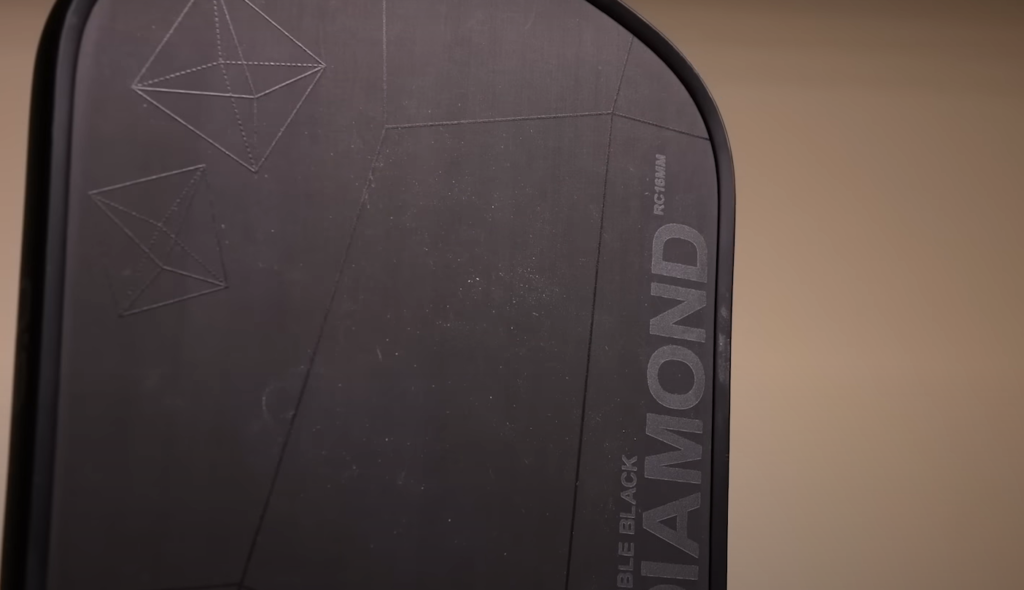
On the other hand, smaller paddles with thinner cores provide better control and finesse, allowing you to precisely place your shots with accuracy. Additionally, some paddles even feature textured surfaces that can assist in generating more spin, adding an extra dimension to your gameplay. By considering these factors, you can choose a paddle that perfectly complements your playing style and enhances your overall performance on the court.
Weight and Balance
The weight and balance of a paddle can greatly impact your performance on the court. Lighter paddles are easier to maneuver and better for players who prefer a faster game. However, heavier paddles can offer more power and stability. On average, a paddle can weigh from 6 to 14 ounces.
Balance is also an important factor to consider. A balanced paddle will feel even in your hand and provide a good mix of power and control. Paddles can be head-heavy, meaning more weight is distributed towards the top, or handle-heavy, with more weight towards the bottom. Experiment to find the balance that works best for you.
Paddle size and shape
When it comes to paddle size and shape, there are a few factors to consider that can have an impact on your game. While standard paddles are typically 8 inches wide by 15-1/2 inches long, beginners might find a slightly larger paddle advantageous, as it provides a larger surface area to make contact with the ball. Additionally, there are variations in shape, such as elongated or oversized paddles, which can offer a different feel and hitting surface. By experimenting with different sizes and shapes, you can discover the optimal paddle that complements your unique play style, leading to improved performance on the court.
Grip Size
When it comes to playing, the size of your grip on the paddle can have a significant impact on your comfort and control. Paddles typically offer grip sizes ranging from 4 to 4-1/2 inches, giving you options to find the perfect fit. A smaller grip size allows for precise control over your shots, while a larger grip size can generate more power in your swings. However, the ideal grip size ultimately depends on personal preference and playing style.
Finding the right balance between comfort and control can greatly enhance your playing experience.Paddle Materials
Paddles can be crafted from a wide array of materials, each boasting its own unique qualities and benefits. Wood paddles, for instance, are the epitome of tradition, offering a soft and comfortable feel while ensuring excellent control over your shots. On the other hand, composite paddles have gained immense popularity due to their lightweight nature and remarkable durability, making them a preferred choice for players of all skill levels.
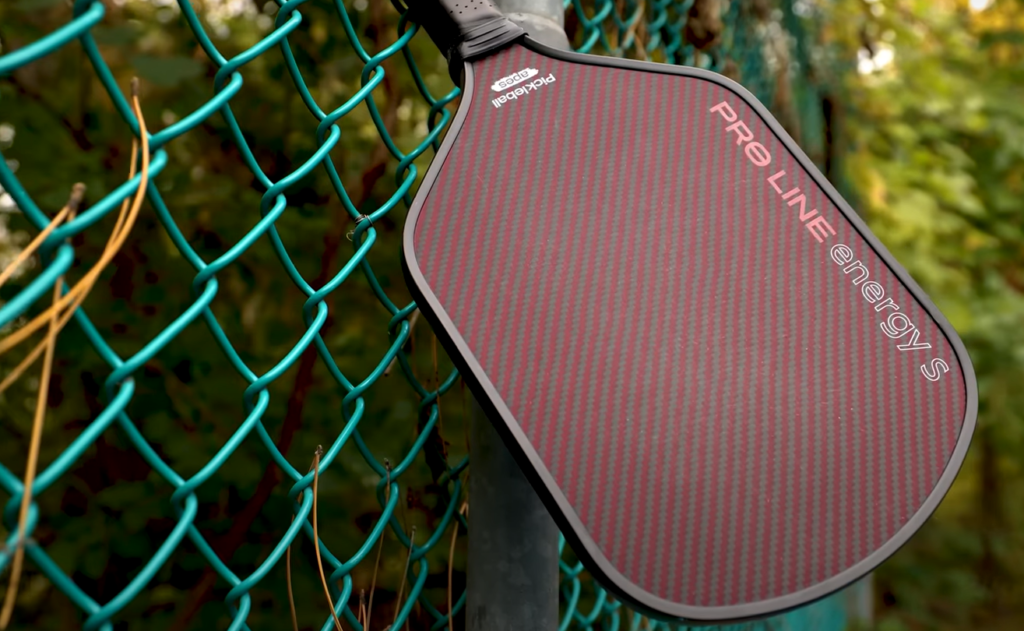
Additionally, there are hybrid paddles available that ingeniously combine different materials to provide specific advantages. For example, a paddle with a wood core and a graphite face offers a perfect blend of power and control. When deciding on the ideal paddle material, it is crucial to consider your playing style and individual needs, ensuring a perfect match for your game.
Paddle Core
The core of a paddle plays a pivotal role in determining its power, control, and feel on the court. When it comes to paddle cores, there are three main types that each bring their unique characteristics to the game. Polymer cores, known for their resilience and energy transfer, are favored by players seeking unmatched power in their shots. On the other hand, aluminum honeycomb cores excel in providing exceptional control and maneuverability, allowing players to finely tune their placement and accuracy.
Lastly, nomex cores, crafted from a type of aramid fiber, strike a delicate balance between power and control, making them a popular choice for players seeking versatility in their gameplay. By understanding the nuances of paddle cores, players can make informed decisions to optimize their performance and elevate their game to new heights [2].
Comparison between Graphite and Fiberglass Pickleball Paddle
Weight
Graphite paddles are widely recognized for their exceptional lightweight design, allowing players to effortlessly maneuver and exert precise power control. On the other hand, fiberglass paddles, while slightly heavier, offer a commendable level of playability that still delights players. It’s worth noting that the weight of a paddle can significantly impact a player’s performance, making it crucial to select a paddle that perfectly aligns with one’s unique playing style and preferences. By carefully considering these factors, players can optimize their gameplay experience and elevate their skills to new heights.
Flexibility
Graphite paddles are known for their impressive rigidity, which enables players to execute accurate shots with minimal effort. This stiffness also contributes to the paddle’s power and control, providing players with a solid feel on every hit. In contrast, fiberglass paddles offer a more forgiving and flexible surface, making them ideal for players who prefer a softer touch and greater versatility in their gameplay. Ultimately, the level of flexibility depends on personal preference and playstyle, as both graphite and fiberglass paddles can deliver exceptional performance on the court.
Power vs Control
When it comes to power, graphite paddles take the lead due to their lightweight design and rigid surface, allowing players to generate a considerable amount of force behind their shots. This makes them ideal for players who rely on powerful serves and shots to dominate the game. On the other hand, fiberglass paddles offer better control thanks to their more flexible surface and slightly heavier weight. This enables players to have more precise and accurate shots, making them a popular choice for players who prioritize control over power. Ultimately, both types of paddles offer unique benefits that cater to different playstyles, making it important for players to carefully consider their needs before choosing between the two.
Graphite vs Fiberglass Durability
Graphite paddles are known for their durability and ability to withstand heavy usage without showing signs of wear and tear. This makes them a popular choice among competitive players who demand top-quality equipment that can keep up with rigorous gameplay.
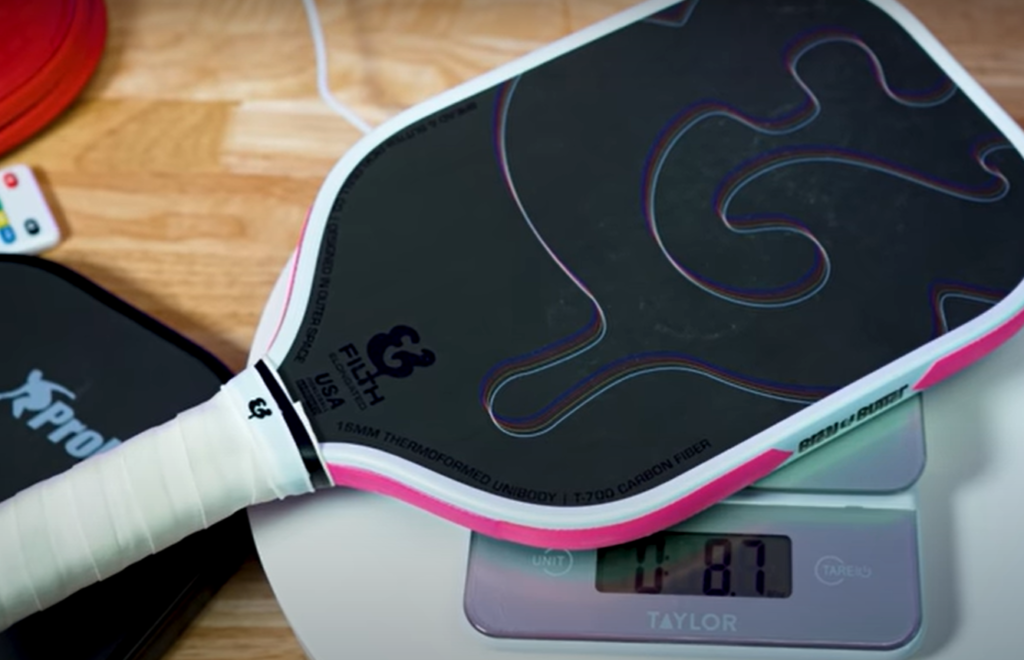
On the other hand, fiberglass paddles may not be as durable as graphite but are still highly resilient and can last for extended periods if properly maintained. Ultimately, the durability of a paddle depends on various factors, such as frequency of use and maintenance, and both graphite and fiberglass paddles can offer impressive longevity when taken care of properly.
Spinning Ability
Graphite paddles have a smooth surface that allows for easy spinning of the ball, making them a popular choice among players who rely on effective spin shots. On the other hand, fiberglass paddles are slightly rougher in texture, which can minimize the amount of spin that can be generated. However, this also aids in control and precision when it comes to more straightforward shots. As with other factors, the spinning ability of a paddle depends on personal preference and playstyle, making it crucial for players to test out different paddles before making a final decision [3].
FAQ
Is there really a difference between pickleball paddles?
While all pickleball paddles share some similarities, such as their purpose of gameplay, they can also vary greatly in terms of materials, shape, weight, grip type, and overall design. The choice of material, whether it’s graphite, composite, or wood, can affect the paddle’s durability, power, and control. The shape of the paddle, whether it’s wide-body or standard, can influence the sweet spot and maneuverability.
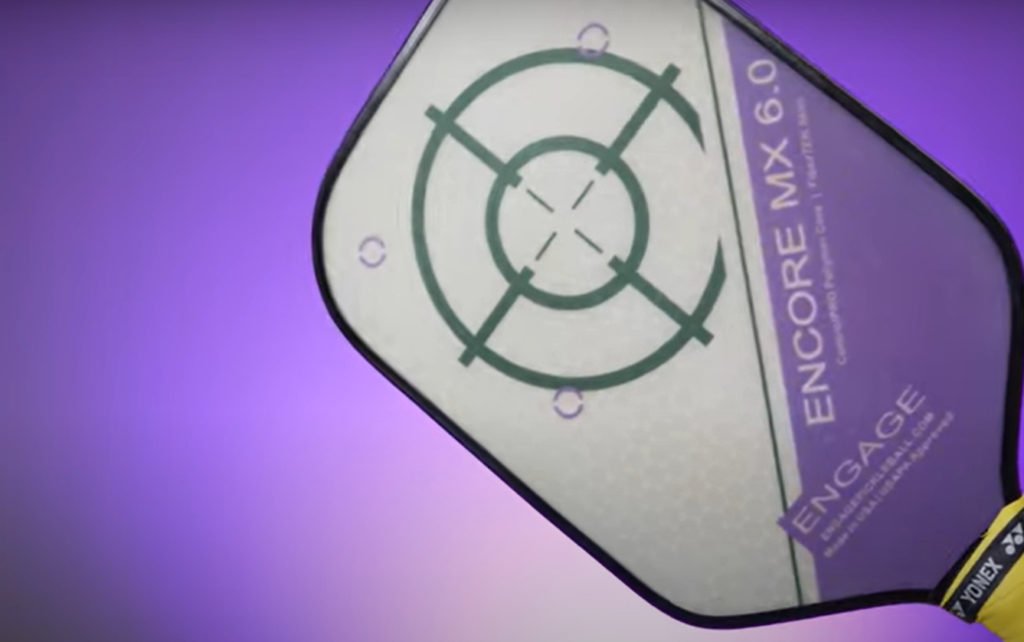
The weight of the paddle can impact your swing speed and fatigue level during long matches. And finally, the overall design, including the handle shape and grip circumference, can affect your comfort and confidence on the court. Considering these various aspects and understanding how they can impact your game play and personal preferences is crucial when choosing the right pickleball paddle for you.
What are the most important things to consider when choosing a pickleball paddle?
When it comes to selecting a pickleball paddle, there are several crucial factors that should be taken into consideration. Firstly, the weight of the paddle plays a significant role in determining the overall feel and maneuverability. A lighter paddle may offer more control and agility, while a heavier one can provide additional power and stability.
Secondly, the grip size is an important aspect to evaluate, as it directly affects the comfort and control you have over the paddle. Finding the right grip size ensures a secure hold and minimizes the risk of slipping during intense gameplay. Thirdly, the material of the paddle can greatly impact its performance and durability. Common materials used for pickleball paddles include graphite, composite, and wood, each with its own unique characteristics.
Lastly, the shape of the paddle, whether it’s wide-body, elongated, or traditional, affects the surface area and sweet spot, influencing the power and precision of your shots. In addition to these technical considerations, it’s crucial to assess your playing style and skill level to find a paddle that aligns with your specific needs and preferences. By carefully evaluating these factors, you can confidently choose a pickleball paddle that enhances your performance and enjoyment on the court.
Which is lighter graphite or fiberglass?
In general, graphite is considered to be the lighter material compared to fiberglass when it comes to pickleball paddles. This is because graphite has a higher strength-to-weight ratio, meaning it can provide the same level of strength and durability as fiberglass while weighing less.
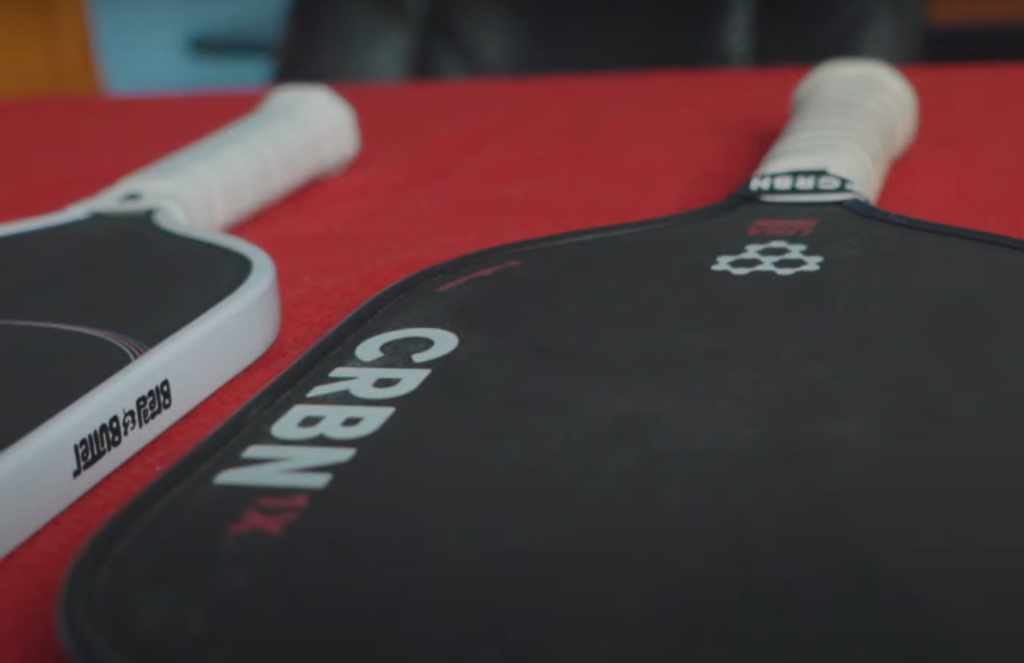
However, this can also depend on other factors such as the overall design and construction of the paddle. Some paddles may use a combination of materials, such as graphite and fiberglass, to find a balance between weight and strength. It’s important to consider the weight of the paddle as one of many factors when choosing the right pickleball paddle for you.
How do I know what pickleball paddle to use?
There is no one-size-fits-all answer when it comes to choosing a pickleball paddle. The best way to determine the right paddle for you is by considering your playing style, skill level, and personal preferences. If you prefer a lightweight paddle with more control, then a graphite or composite paddle may be the best option. On the other hand, if you’re looking for a paddle with more power and stability, then a heavier wood or composite paddle may be a better fit. It’s also important to try out different paddles and get a feel for their weight, grip size, and overall design to see what feels most comfortable and effective for you on the court.
What does composite pickleball paddle mean?
A composite pickleball paddle is made from a combination of materials, typically including polymer cores and fiberglass or carbon fiber face layers. This combination of materials creates a paddle with a balance of power, control, and durability. The use of composites allows for customization in terms of weight, shape, and surface texture to meet the needs of different players. Composite paddles have become increasingly popular in the pickleball world due to their versatility and performance capabilities. Whether you’re a beginner or a seasoned player, a composite paddle can offer the right combination of features to enhance your gameplay.
Is graphite or fiberglass better for pickleball?
The debate between graphite and fiberglass as the better material for pickleball paddles is ongoing. Both materials have their own unique benefits and it ultimately comes down to personal preference. Graphite paddles are known for being lightweight, providing more control over shots and less fatigue during long matches. On the other hand, fiberglass paddles offer more power and stability due to their heavier weight and larger sweet spot. Some players may find that a combination of both materials, such as a graphite face with a fiberglass core, offers the perfect balance for their playing style.
Why can pickleball paddles not be wooden?
While wood was the primary material used for pickleball paddles in the early days of the sport, it has since been replaced by more modern materials such as graphite and composite. This is due to several reasons, including durability, weight, and performance. Wooden paddles are prone to wear and tear over time and can easily break or warp under intense gameplay. They also tend to be heavier, making them more challenging to maneuver and potentially causing fatigue during long matches. Additionally, wooden paddles do not offer the same power and control as graphite or composite paddles due to their smaller surface area and sweet spot. Therefore, they are no longer considered suitable for high-level competitive play but can still be found in recreational settings.
How do you properly care for your pickleball paddle?
Proper care and maintenance of your pickleball paddle can greatly extend its lifespan and performance. Here are some key tips to keep in mind:
- Clean the surface of your paddle after each use with a damp cloth to remove any dirt, debris, or sweat.
- Avoid leaving your paddle in extreme temperatures, such as in a hot car or in direct sunlight, as this can cause warping or damage.
- Store your paddle in a protective case when not in use to prevent scratches and other damage.
- Avoid hitting the ground or other hard surfaces with your paddle during gameplay to avoid chipping or cracking.
- If using a composite paddle, periodically check for any cracks or delamination and replace if necessary.
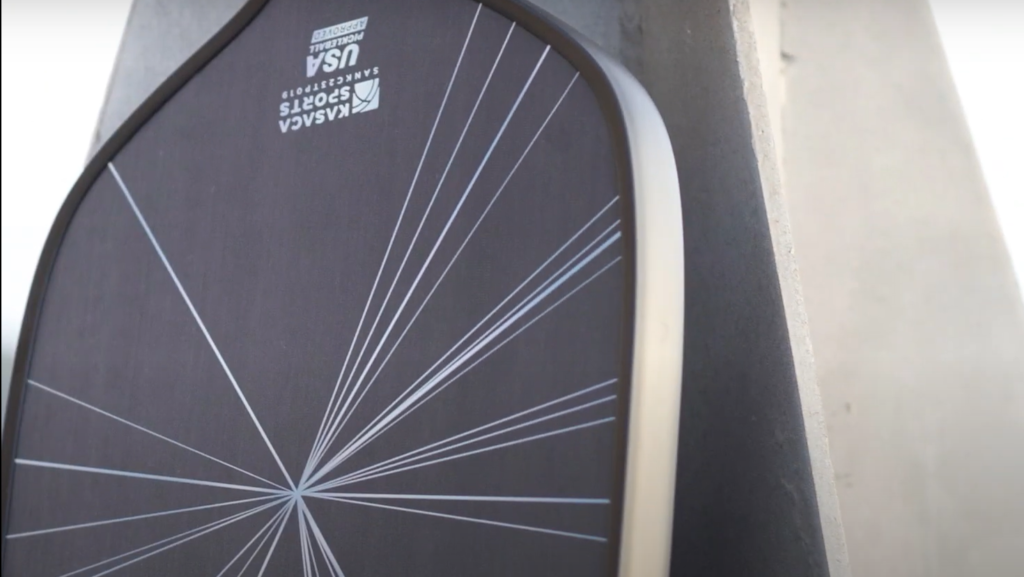
By following these simple care instructions, you can ensure that your pickleball paddle remains in top condition for many games to come. Overall, choosing the right material, shape, and weight of your pickleball paddle is essential in enhancing your gameplay experience. It’s also important to take proper care of your paddle to maintain its performance and durability over time.
Useful Video: 7 Shots EVERY Pickleball Beginner MUST Know
Conclusion Paragraph
So, next time when you choose between Graphite and Fiberglass Pickleball Paddles, make sure to consider your playing style and preferences. If you are a beginner or just starting out, then Fiberglass Pickleball Paddles might be the best choice for you due to their lightweight design and forgiving nature. However, if you are an advanced player looking for maximum power and control, then Graphite Pickleball Paddles might be the better option for you.
Moreover, it is important to remember that the type of paddle you use is just one aspect of your overall performance in the game. Other factors such as technique, footwork, and strategy also play a significant role in improving your gameplay. So make sure to work on those aspects as well to truly excel in pickleball.
References:
- https://www.thepioneerwoman.com/just-for-fun/a40934353/what-is-pickleball/
- https://pickleballeffect.com/other/a-pickleball-paddle-buyers-guide-how-to-pick-the-right-paddle-for-you/
- https://www.pickleballuniversity.com/home/graphite-vs-fiberglass-pickleball-paddles





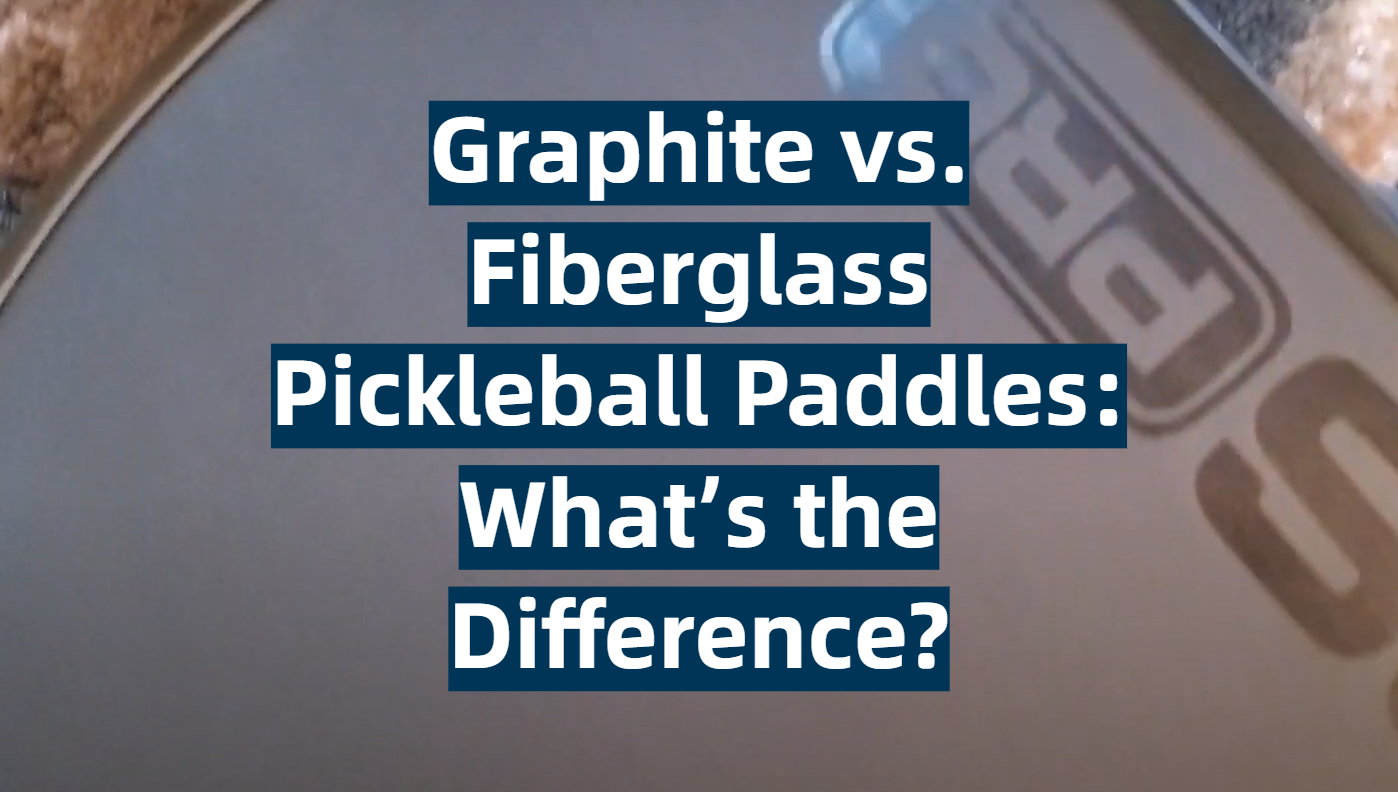




Leave a Review